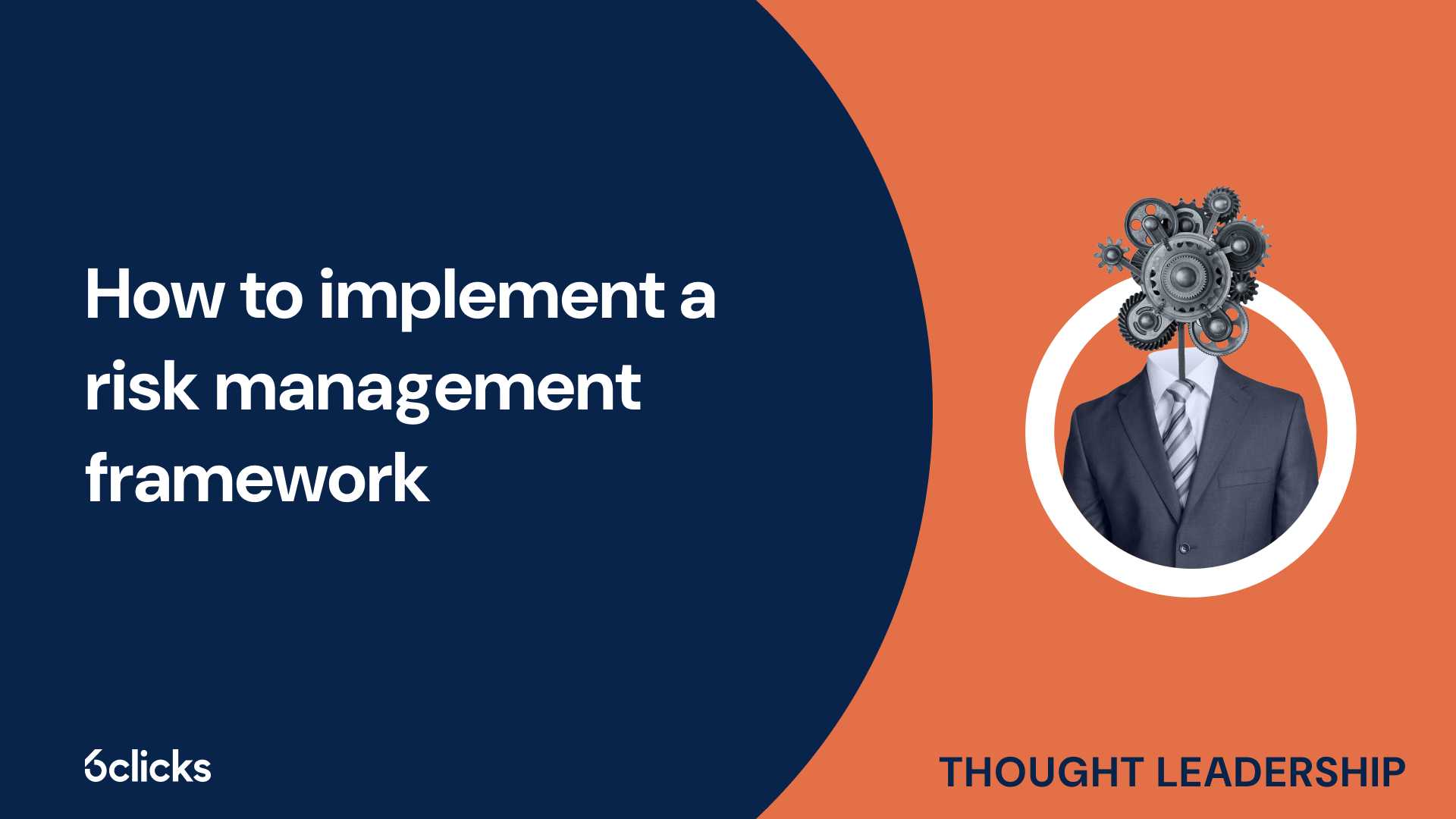The GRC buyer’s guide for 2025: Building resilience with AI-powered, federated solutions
Discover the ultimate GRC buyer's guide for 2025! Uncover how AI-powered, federated solutions transform compliance and security management for industries like government, aerospace, banking, and more. Learn about centralized control, continuous compliance, and advanced cyber GRC capabilities. Download now!
-1.png?width=200&height=249&name=Group%20193%20(1)-1.png)
The GRC buyer’s guide for 2025: Building resilience with AI-powered, federated solutions
What is the NIST CSF?
The NIST Cybersecurity Framework (CSF) is a set of guidelines and best practices designed by the National Institute of Standards and Technology to help organizations manage cybersecurity risks. Adaptable to any organization’s needs, it consists of six core functions: Govern, Identify, Protect, Detect, Respond, and Recover. These functions guide organizations in recognizing risks, safeguarding assets, detecting incidents, responding to threats, and restoring operations. Using the NIST CSF can enhance an organization’s cybersecurity resilience and protect it against cyber threats.
1. Govern: The Govern function is the foundation of a cybersecurity strategy, ensuring that cybersecurity risk management is aligned with the organization’s objectives, regulatory requirements, and business priorities. This function ensures leadership oversight, governance structures, and risk management processes are in place.
Key elements:
- Define cybersecurity policies, roles, and responsibilities.
- Establish risk management frameworks and governance structures.
- Ensure compliance with industry regulations and legal requirements.
- Align cybersecurity with business objectives and risk appetite.
- Conduct cybersecurity strategy reviews and board-level reporting.
2. Identify: The Identify function focuses on understanding and managing cybersecurity risks related to assets, systems, data, and capabilities. It helps organizations develop a clear understanding of their cybersecurity posture, critical assets, and potential risks. This function is foundational to building a strong cybersecurity program.
Key elements:
- Identify critical assets, systems, and data.
- Assess potential cybersecurity risks and their impacts.
- Understand risk tolerance and prioritize risk management efforts.
- Develop a comprehensive risk profile.
- Establish governance, roles, and responsibilities for cybersecurity.
3. Protect: The Protect function involves implementing safeguards and protective measures to ensure the confidentiality, integrity, and availability of critical assets and systems. This function emphasizes preventing cybersecurity incidents by strengthening defenses and limiting exposure to threats.
Key elements:
- Implement access controls, data encryption, and security policies.
- Train employees on cybersecurity awareness and best practices.
- Secure network and information systems.
- Develop and enforce security measures like firewalls, intrusion prevention, and backup systems.
- Limit access to critical resources through authentication and authorization protocols.
4. Detect: The Detect function aims to identify potential cybersecurity incidents promptly. It involves continuous monitoring, proactive threat intelligence gathering, and implementing detection processes to identify anomalous events or potential cyber threats.
Key elements:
- Continuously monitor systems, networks, and assets for abnormal activities.
- Use tools like SIEM (Security Information and Event Management), IDS (Intrusion Detection Systems), and EDR (Endpoint Detection and Response).
- Implement continuous security monitoring and anomaly detection.
- Develop a structured process for detecting incidents and raising alerts.
5. Respond: The Respond function is about taking action to contain and mitigate the impact of cybersecurity incidents. This function helps organizations plan, manage, and coordinate their response to incidents to ensure they can recover quickly and minimize damage.
Key elements:
- Develop an incident response plan that includes clear roles and responsibilities.
- Execute containment strategies to limit the spread of the incident.
- Communicate effectively with internal and external stakeholders.
- Perform forensic analysis to understand the cause and impact of the incident.
- Implement corrective actions and improvements based on lessons learned.
6. Recover: The recover function focuses on restoring normal operations after a cybersecurity incident, ensuring business continuity, and enhancing resilience. This function emphasizes the recovery process, including restoring systems, data, and services while learning from the incident to improve future resilience.
Key elements:
- Develop and implement recovery plans to restore systems and operations.
- Ensure backup and disaster recovery capabilities are in place.
- Learn from incidents and incorporate lessons into future cybersecurity strategies.
- Communicate recovery progress with stakeholders to rebuild trust.
- Enhance organizational resilience and preparedness for future incidents.
These six functions—Govern, Identify, Protect, Detect, Respond, and Recover—form the core of the NIST Cybersecurity Framework and provide a comprehensive approach to managing and improving cybersecurity across an organization. They help organizations anticipate, detect, respond to, and recover from cybersecurity threats while ensuring that critical business operations remain secure and resilient.
Summary
The NIST Cybersecurity Framework (CSF) is a set of guidelines created to help organizations manage and reduce cybersecurity risks, ensuring the protection of critical assets and systems. It consists of six core functions: Govern, Identify, Protect, Detect, Respond, and Recover, which work together to enhance an organization's ability to prevent, detect, and respond to cybersecurity threats. These functions help organizations assess risks, implement protective measures, monitor for anomalies, manage incidents effectively, and recover from disruptions, all while strengthening overall resilience against evolving cyber threats.
- Built-in content including frameworks like the NIST CSF, ready-to-use control sets, assessment templates, and more
- Risk management and incident management capabilities for conducting risk assessments, capturing issues and incidents, and overseeing remediation actions
- Control implementation and audit readiness functionality to align with the security guidelines of NIST CSF








.jpg?width=302&height=170&name=eBook%20Title%20-%20Risk%20management%20for%20ISO%2027001%20and%20ISMS%20expert%20guide%20eBook%20(1).jpg)





